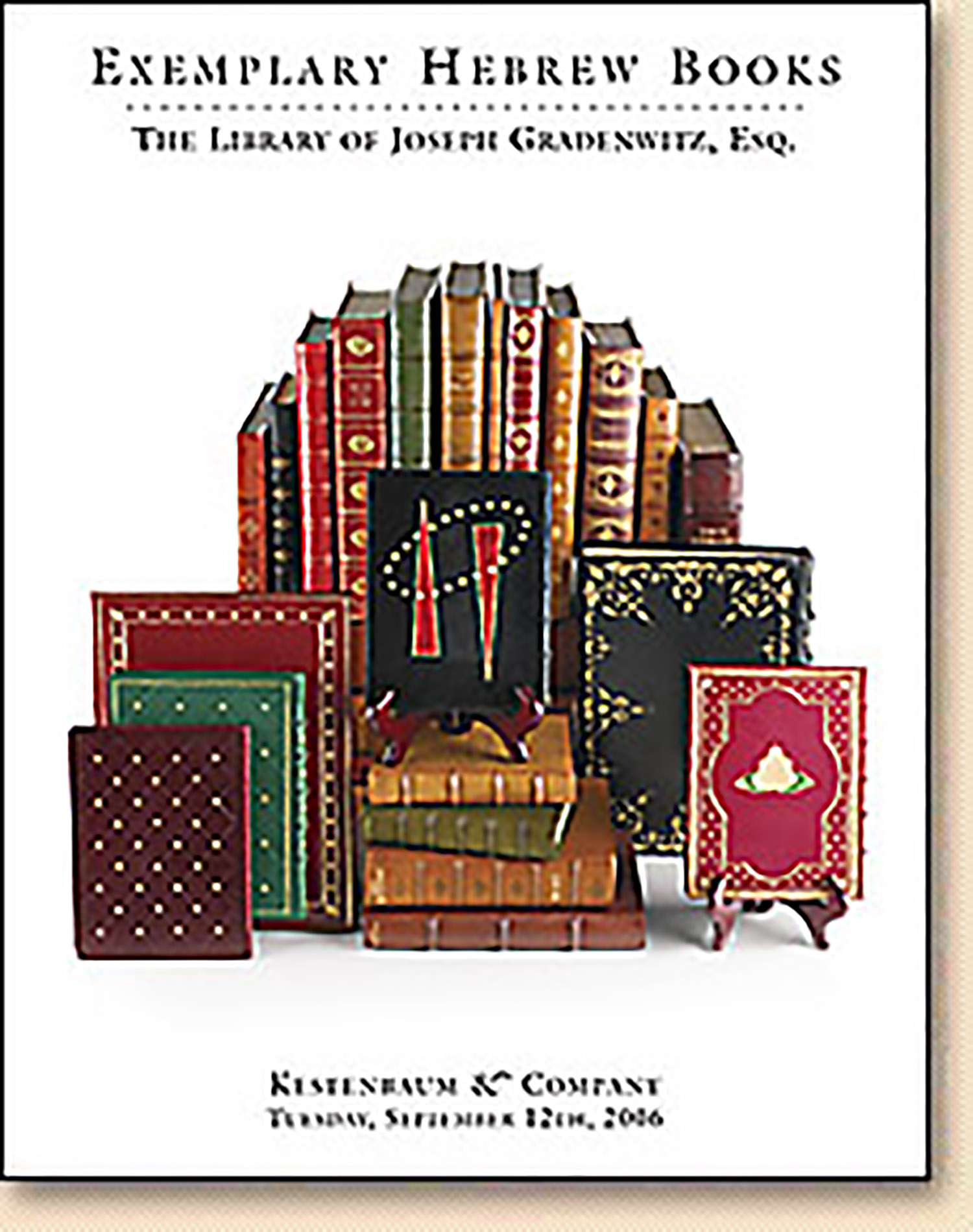(NACHMANIDES / RaMBa”N). Chidushei Bava Bathra [novellae to Talmud Tractate]. * Appended: Dina de-Garmei

AUCTION 34 |
Tuesday, September 12th,
2006 at 1:00
Exemplary Hebrew Books: The Library of Joseph Gradenwitz, Esq.
Lot 121
MOSES BEN NACHMAN
(NACHMANIDES / RaMBa”N). Chidushei Bava Bathra [novellae to Talmud Tractate]. * Appended: Dina de-Garmei
Venice: Daniel Bomberg 1523
Est: $3,000 - $5,000
PRICE REALIZED $5,000
Dina Degarmi, is an exposition of laws pertaining to personal injuries and property damage. This small, work was highly praised and generated many super-commentaries
In the poem which serves as the preface to Dina de-Garmei (f.110), Nachmanides praises his predecessors, the “Sages of France” (i.e. The Tosaphists). R. Solomon Luria (Yam shel Shelomo, Tractate Bava Kama, Introduction) would cite this poem as proof of the great esteem in which Nachmanides, a Spaniard, held the rabbis of France. Maimonides, on the other hand, had a certain disdain for the French rabbis, writing of them disparagingly. See C.B. Chavel, Kithvei Ramban, vol. I (1968), p.417; EJ, Vol. XII, col. 780; Vol. VII, cols. 430-431.
Israel Ta-Shema has established that with the exception of Nachmanides’ commentary to Bava Kama and the appended “Dina de-Garmei,” printed in Venice in 1523, there did not appear in print any other work of Nachmanides’ Talmudic interpretations for the next two centuries. The ramifications of this are enormous, for it means that Aschkenazic decisors such as R. Shabthai Cohen, author “Siphthei Cohen” (Sha”Ch) were bereft of the major portion of Nachmanides’ scholarship. See I.M. Ta-Shema, Kiryath Sepher, Vol. L (1975), p.327; and Haym Soloveitchik, “Printing and the History of Halakha - A Case Study” in: Bar-Ilan Annual, Vol. XXX-XXXI (2006), p.319
